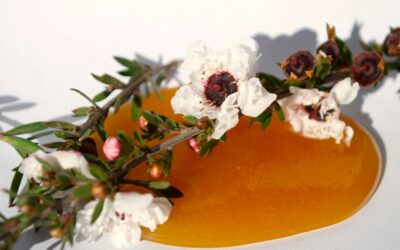Are Table Honey and Medical Grade Honey The Same
Table honey or culinary honey is not the same as medical grade honey. What then, is medical grade honey and what kind of injuries can it be used for? This article addresses this question, so read on to find out more!
Note:
I have used the terms “clinical grade”, “medical grade” and “sterilized” honey interchangeably, but they refer to the same type of honey that is used as medicinal treatment for wounds. The same is true for other terms that denote the type of honey that is not used for medical purposes.
Introduction to clinical grade honey
Clinical grade honey or medical grade honey is leptospermum honey, i.e., manuka honey or jellybush. These types of honey have antibacterial properties that can counter antibiotic-sensitive bacteria and antibiotic-resistant bacteria, even when their concentration is diluted. As a result of it’s antibacterial property, manuka honey has been used to treat wounds.
Honey was not a favoured medical treatment option in the 1970s, but with the advancement of technology, it was brought back when equipment that could sterilize honey were developed. The usage of honey for the dressing of wounds was then licensed in the UK in 2004.
For manuka honey to be considered clinical grade or therapeutic, it must have a Unique Manuka Factor (UMF) rating of more than 10+.
How is medical grade honey produced
The procedure of making clinical grade honey is thorough, as the producers must ensure that there is no risk of contamination from the fields to the factory. This means that both the nectar source and harvesting sources must be clean. After boxes containing honey are loaded it to the truck, the loaded portion of the truck is sealed with a tarpaulin to ensure that no dust or contaminants can enter the honey box during transportation.
Once the honey has reached the factory, state of art filtration is introduced to remove pollen from honey. The honey is sterilized via gamma irradiation or pasteurization to ensure that no live bacteria or spores are present. Gamma irradiation is also a method used to sterilize wound dressings. The benefit of using gamma irradiation is that is does not damage the properties of the honey that you need in wound healing.
Why is manuka honey used
It contains three unique compounds:
Methylglyoxal (MGO) is a organic compound that is a major contributor of manuka honey’s antibacterial properties. MGO fights against some bacteria such as Proteumirabilis and Enterobacter cloacae.
Leptosperin is a naturally occurring chemical found only in the nectar of Manuka plants.
Dihydroxyacetone (DHA) is a simple saccharide that is also found in the nectar of Manuka plants and they convert into MGO during the process of honey production.
Apart from it’s antibacterial properties, manuka honey also helps in the production of white blood cells that are necessary to fight infections and heal tissues.
Differences between honey suited for clinical use and supermarket honey
Medical grade honey is free from bacteria and other microorganisms due to the meticulous production process, while table honey may be contaminated with a range of microbial organisms. Honey that is suitable for medical use would contain MGO, which defines it’s antibacterial potency and hence is the most significant difference between clinical grade honey and table honey. It is also precisely because of the presence of MGO that manuka honey does not accumulate hydrogen peroxide, while other types of honey contain this antiseptic compound.
On a side note, do note as there may be pathogenic organisms present in non-sterile honey, vulnerable patients may be exposed to a risk of infection. Hence, it is recommended to avoid using table or supermarket honey for wound treatment, but to use instead, specific types of honey indicated as medical grade.
Uses of sterile honey
Sterile honey can be used as a form of natural antibiotic, which encourages the macrophages to release mediators needed for tissue healing and reducing microbial infections. Hence, clinically approved manuka honey may help to treat wounds such as leg ulcers, diabetic foot ulcers and pressure ulcers.
For more information on medical grade manuka honey for wound care, please visit our blog.
The effectiveness of clinical grade honey
Currently, clinical evidence on the efficacy of clinical grade honey on wound healing is low, but there are some evidence suggesting that it could work more effectively on burns. Nonetheless, clinical grade honey is still useful, for it’s antibiofilm activity (see explanation in manuka honey for wound care) and the fact there has not been resistance to honey’s antibacterial effects, which signify that honey may be used as a natural antibiotic.
Conclusion
All in all, medical grade manuka honey may still be used by those who prefer more natural remedies. Ultimately, the decision to use clinical grade honey or prescription creams lie on yourself, but you should consider the extent of your injury and seek the advice of a medical professional.



